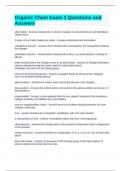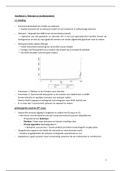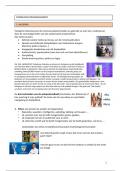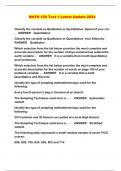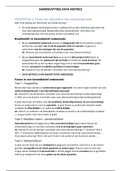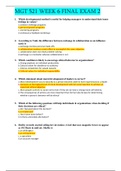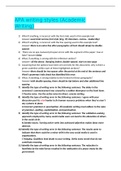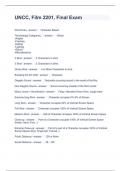Exam (elaborations)
Organic Chem Exam 3 Questions and Answers
- Module
- Institution
alkyl halide - Answer-compounds in which a halogen is connected to an sp3 hybridized carbon atom 2 types of rxn's alkyl halides go under - Answer-substitution and elimination substitution reaction - Answer-when treated with a nucleophile, the nucleophile replaces the halogen elimination re...
[Show more]
